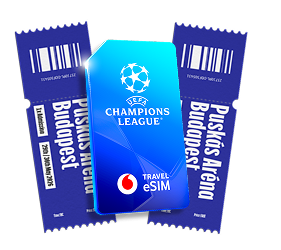Irazusta explains: “Atocha was very, very similar to a lot of English stadiums – very tight, right on top of the pitch and right on top of the players. It had a proper football feel. The style of play was along the same lines. Real were a team who never stopped.”
For Górriz, this was a night where the home crowd, standing sardine-tight on the terraces, made a telling difference. “The strongest memory of that night is the connection with the public – how the crowd got behind us from the first minute.” Juan Antonio Larrañaga gave them a half-time lead with an indirect free-kick strike from inside the area. Then, in the 68th minute, teed up by some trickery from Zamora, José Mari Bakero – later a European Cup winner with Barcelona – added the decisive second goal.
Górriz reflects that Atocha, the club’s home for 80 years until the move to Anoeta in 1993, was key not just on that night but throughout this golden era. “Michael Robinson once told me it was the stadium he liked most in Spain as it reminded him of those old stadiums in England. It was an old ground with wooden stands and the people right on top of you. It helped us a lot. We could really press the opposition and the crowd would too. I had Spain team-mates who said coming to Atocha was daunting but also inspiring as it was a great ground to play at.”
Thanks to their victory against Sporting, La Real had become the fourth Spanish club to reach the European Cup semi-finals. Yet barring their path to the Athens final were Hamburg, a side in the process of retaining their Bundesliga title back in Germany.
“The report we got was a bit scary. They had a lot of internationals, a very strong team,” recalls Górriz, who was assigned the job of man-marking Horst Hrubesch, aka Kopfballungeheuer - the Heading Monster. “When I saw him on the pitch, I thought, ‘My God, look what I’ve got to mark,’ as he was so big,” he laughs. “It wasn’t that he was that much taller, but he was much stronger and he used his body so well and was great in the air.”
This time, the Atocha factor only counted for so much. Irazusta remembers: “Hamburg played defensively and it was hard for Real to get through. They had a counter and managed to get in front.” Wolfgang Rolff’s looping header over Arconada came in the 58th minute. However, from a corner with 17 minutes remaining, defender Agustín Gajate bundled in a close-range equaliser. Late chances for both sides followed, notably a Hrubesch header against the post in the last minute, yet the draw – and away goal – undoubtedly favoured Hamburg.
In its preview of the second leg, El País wrote: “Real Sociedad have come to Hamburg in search of a miracle, but this is no Lourdes.” And so it proved for a team missing several key players in Gajate, Kortabarria, Satrústegui and Zamora.
If Ormaetxea would later rue a first-half opportunity spurned by Larrañaga, the defender turning and shooting over, Hamburg had their own near miss with a Felix Magath effort that struck the inside of the post. Eventually, in the 75th minute, Ernst Happel’s side took the lead through a fierce Ditmar Jakobs header from a corner.
Yet the visitors’ heads did not drop. Five minutes later, José Diego Álvarez broke into the box after receiving a pass from substitute Bakero and lashed the ball high inside the near post. Now La Real could scent an opportunity. Górriz remembers: “We were always a bit on the back foot in that tie but when we equalised in Germany, I felt we could get the better of them. You could see they’d started to doubt.” Which made what happened next all the harder to swallow.
Seven minutes from the end, a half-cleared corner was driven back in by Magath. The ball deflected off the hip of Jakobs and bounced to Thomas von Heesen alone on the edge of the five-metre area, and he thrashed it high past Arconada. Forty years on, Górriz remains adamant that Von Heesen was in an offside position. “The whole team protested,” he adds, recounting that the referee’s assistant on that side was a Bundesliga referee, Udo Horeis, who had stepped out of the stands to take the flag for the second half following an injury to the original Swiss linesman, Peter Aschwanden. “It was right near the end of the game and we were having our best spell. If it had gone to extra time… you never know, but I think we’d have been the stronger side. We were so frustrated.”
“I have seen the players from La Real cry – and I mean cry – on two occasions,” adds Irazusta. “The first was the match in Seville where they lost the league. Back in the hotel in front of the Sánchez-Pizjuán, I saw the players in floods of tears. And it was the same in Hamburg.” An adventure was over. But what an adventure. As Górriz told us at the start, the boys from the Basque Country really had made their mark.
























